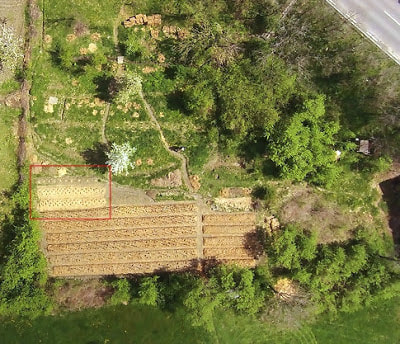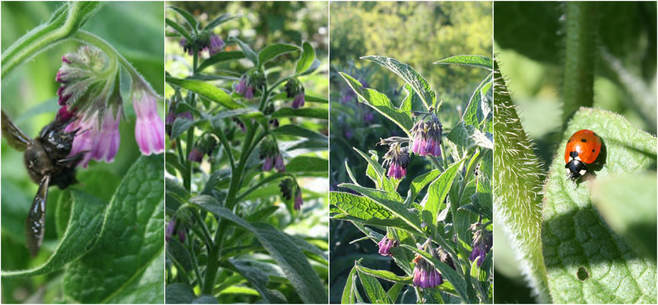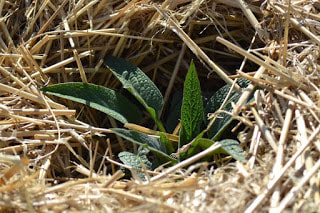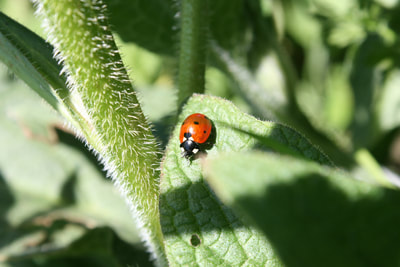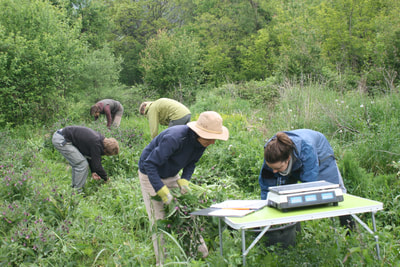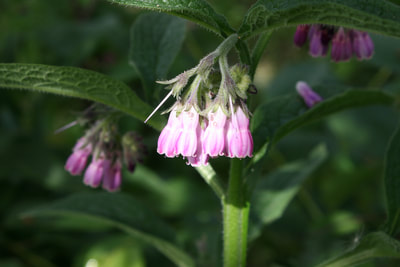Inspired by the work of Lawrence D Hills (1911–1991) who undertook extensive research on comfrey during his lifetime, we decided to start some comfrey trials of our own to see just how much biomass these plants can produce for us, how well they fertilise our crops, how attractive they are for garden wildlife and whether they have a beneficial impact on the soils. You can find a summary of our results below and for more details of the trial see the write up in our blog here.
Comfrey Trial Results 2016 - 2017
We cut the Comfrey bed four or five times per season and record the weight of the material. Lawn trimmings are applied to the surface of the beds following each cut. During the season we casually observed invertebrate activity in the patch and take note of wild plants that establish in the beds.
Soil Analysis
As well as how much biomass we can harvest we are also interested to learn how comfrey affects soil fertility and as such have been gathering soil samples from the plot for analysis. We took a soil sample in the area before preparing the beds in March 2015, a sample in November of 2016 after the first season of cuts were made and routine samples in March and November of each year. All samples are sent to NAAS of the Ministry of Agriculture and Food.
Telephone+359988342649
|
|

